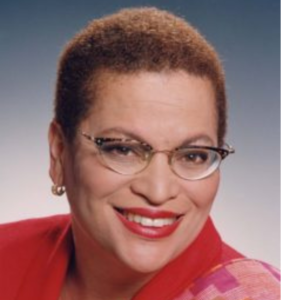Congressman John Conyers (D-MI) introduced H.R. 40 in every congressional session from 1989 until he left Congress in 2017. Then, Congresswoman Sheila Jackson Lee (D-TX) ably took the baton and ran with it, amassing more than 200 Congressional co-sponsors for the legislation that would study and develop reparations proposals for African Americans.
Had House Speaker Nancy Pelosi (D-CA) chosen to schedule a vote on H.R. 40, it would likely have passed, given its strong co-sponsorship. While as many as 40 senators have supported the companion legislation, S40, introduced by Senator Cory Booker, reparations legislation was not likely to pass the Senate. With Republicans poised to take the House of Representatives, H.R. 40 won’t get a House vote.
But President Biden can move the reparations movement forward by signing Executive Order 40 (#EO40), which could establish the commission that HR 40 requires. The organizations that support H.R. 40, including the NAARC, National African American Reparations Commission (on which I serve), and N’COBRA, the National Coalition of Blacks for Reparations in America, are urging President Biden to sign this executive order on Dr. King’s birthday in 2023.
Callie House was one of the first reparations advocates, advocating for the National Ex-Slave Mutual Relief, Bounty and Pension Act, seeking pensions for formerly enslaved people who fought in the Civil War. The government, of course, opposed her efforts, with the Post Office Department aggressively vilifying her. House was convicted of postal fraud (the same thing Marcus Garvey was convicted of). Her jury was all white males. She was incarcerated for a year, a blow to the reparations movement.
House was a threat to the illusion of white supremacy. Her organization filed a lawsuit against the U.S. Treasury, seeking to distribute cotton tax revenues to formerly enslaved people. Of course, the case failed, with the U.S. Court of Appeals and the Supreme Court asserting that the government had immunity for the crime of enslavement and owed nothing to formerly enslaved people. In the eyes of white America, House had to be punished for her audacity, thus her conviction and jail sentence.
Callie House sowed the seeds that are now bearing fruit. For example, the notion that cotton tax money should be used to compensate those who picked cotton has borne fruit in the contemporary reparations movement. In Evanston, Illinois, the first municipality to implement reparations, marijuana tax money is being used to compensate those affected by discriminatory housing policies. Connecting the source of payment to the harm people experienced is Callie House’s legacy.
More than 100 local reparations advocates gathered in Evanston December 1-3 at a gathering sponsored by NAARC and First Repair, the organization founded by Robin Rue Simmons, the former Evanston alderwoman who was the force behind local reparations.
Described by some as the “Rosa Parks of the Reparations Movement,” Simmons has been a visionary in “informing local reparations nationally.” She gathered people from Boston, San Francisco, Asheville, Amherst, Miami, Nashville, Evanston and other cities to share their strategies to obtain local reparations. Attendees also rallied around the need for an Executive Order (#EA40) to establish a national reparations commission to suggest ways to provide reparations.
The wealth gap is in the news these days. Black folks have one dollar in wealth for every 10 dollars whites have. The reason for this gap is simple and deliberate. It isn’t that Black people don’t save enough. It’s that deliberate public policy has been used to accelerate the white accumulation of wealth (think the G.I. Bill) while decelerating Black accumulation.
The ugly history of the white economic envy that led to lynchings, violent community decimation (Tulsa, Wilmington, N.C.), government-sanctioned land appropriation (sundown towns), and government-sanctioned discriminatory benefits distribution (how many Black veterans were denied benefits) is directly responsible for the wealth gap. This history makes a strong case for reparations.
Some suggest that local remedy is not the same thing as reparations. They are wrong! If a local entity harmed Black people, that entity must fix it, as must the federal government. Every entity that has caused harm must remedy that—federal, state, local, corporate, and university. The harm inflicted on Black people has contemporary outcomes and must be remedied.
People who care about national reparations should reach out to their Congress members, especially the White House, to encourage President Biden to sign an executive order. We must also thank Congresswoman Sheila Jackson Lee for her efforts. Callie House was not the first person to take the reparations struggle to the courts, and the struggle continues. President Biden can move the struggle forward with a supportive executive order.

Dr. Julianne Malveaux is an economist, author, and Dean of the College of Ethnic Studies at Cal State LA.




